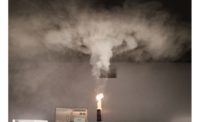Kidde is the first smoke alarm manufacturer to receive certification to the UL Standard for Smoke Alarms, UL 217, 8th Edition, set to take effect in May of 2020. The new Kidde smoke alarms utilize Kidde’s TruSense sensor and are designed to reduce common cooking nuisance alarms and respond faster to different types of fire. Kidde is part of Carrier, a leading global provider of innovative HVAC, refrigeration, fire, security and building automation technologies.
The Kidde alarms with TruSense sensors can differentiate between threatening fast-flaming or smoldering fires and some of the most common home nuisance alarms. The new alarms may also improve overall resident safety, as today’s homes typically contain furnishings comprised of synthetic materials such as polyurethane foam that are known to ignite and burn faster than traditional materials. In addition to these synthetic materials tests, a new nuisance test is being implemented to help prevent consumers from disabling or removing alarms from service due to cooking related nuisance alarms.
The significantly revised UL standard incorporates new tests related to cooking nuisance alarms and smoldering and flaming polyurethane. These requirements are in addition to the standard’s wood and paper tests. The three new tests were added to better represent the smoke profiles and behavior of modern home fires to help ensure next-generation sensors are designed to give residents more time to evacuate safely. All UL Certified smoke alarms are required to meet the enhanced requirements by May 29, 2020, representing a major change in the life-safety industry.
“Through our research in safety science, we know that fire dynamics have changed over the last several decades,” said Chris Hasbrook, vice president and general manager for UL’s Building and Life Safety division. “Manufacturers like Kidde have been actively working toward meeting the new smoke alarm requirements, and we are happy to see the first certification mark on a residential smoke alarm that meets these new requirements. While expanding a smoke alarm’s ability to respond to a range of the types of smoke generated from various types of fires, today’s smoke alarm will be more technologically advanced. New models that meet these new requirements will have the ability to help reduce cooking nuisance alarms, and that’s extremely important for residential fire safety.”
The technology in TruSense represents a more sophisticated detection methodology. As particles enter the chamber, the size of the particles is analyzed by a series of algorithms and consolidated into ratios to determine if the particles stem from a real fire or a nuisance source.
“Kidde is providing customers with the latest in smoke alarm technology, building on a 100-year legacy of fire and life-safety innovation,” said Tim Corbett, director of product management and marketing, Kidde. “The new TruSense sensors will enhance protection of people and property by minimizing nuisance alarms and providing residents with more time to react.”
Visit www.kidde.com for more information.








